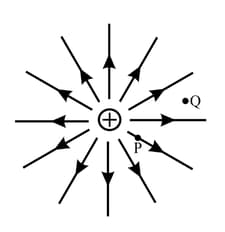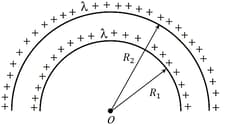MEDIUM
Earn 100
The graph of electric field due to a point charge vs the distance from the point charge shows that the electric field becomes equal to at infinite distance.
50% studentsanswered this correctly
Important Questions on Electrostatics
MEDIUM
A point is away from point charge and from point charge. The electric potential at point is____.
()
EASY
The electric field lines of a positive charge is as shown in figure:

Give the sign of potential difference .
MEDIUM
An electric charge is uniformly distributed around a semicircle of radius . Calculate the electric potential at the centre of this semicircle.
EASY
(Assume, )
EASY
MEDIUM
The electric potential at the centre of two concentric half rings of radii and , having same linear charge density is

EASY
EASY
EASY
EASY
EASY
An electric dipole is placed as shown in the figure.

The electric potential (in ) at point due to the dipole is (=permittivity of free space and )
MEDIUM
MEDIUM
EASY
HARD
MEDIUM
EASY

EASY
EASY
HARD

